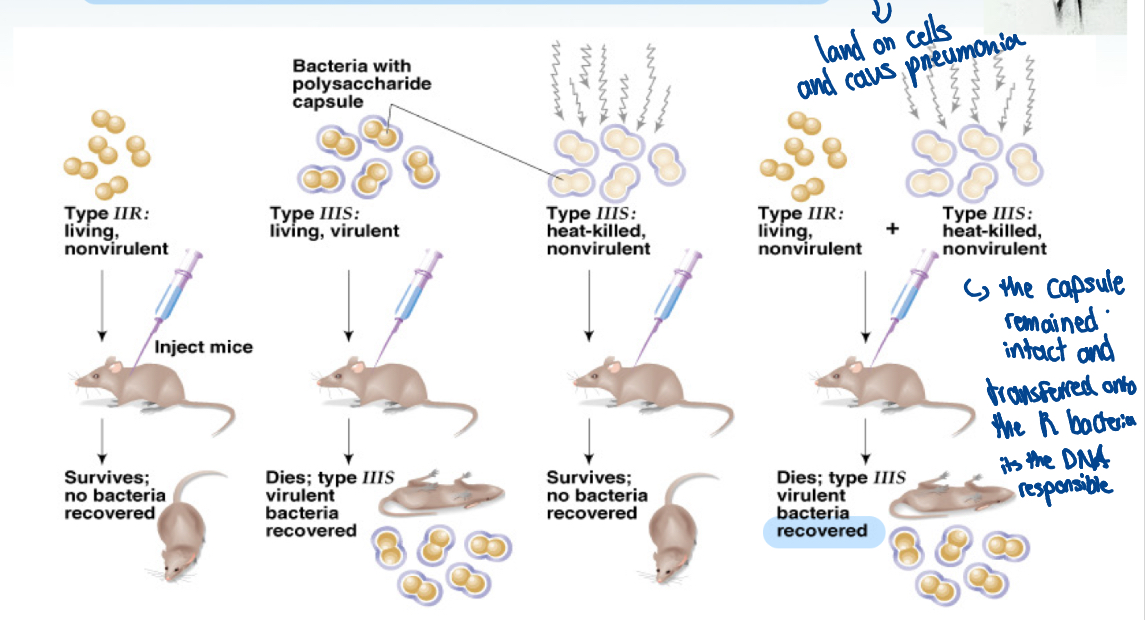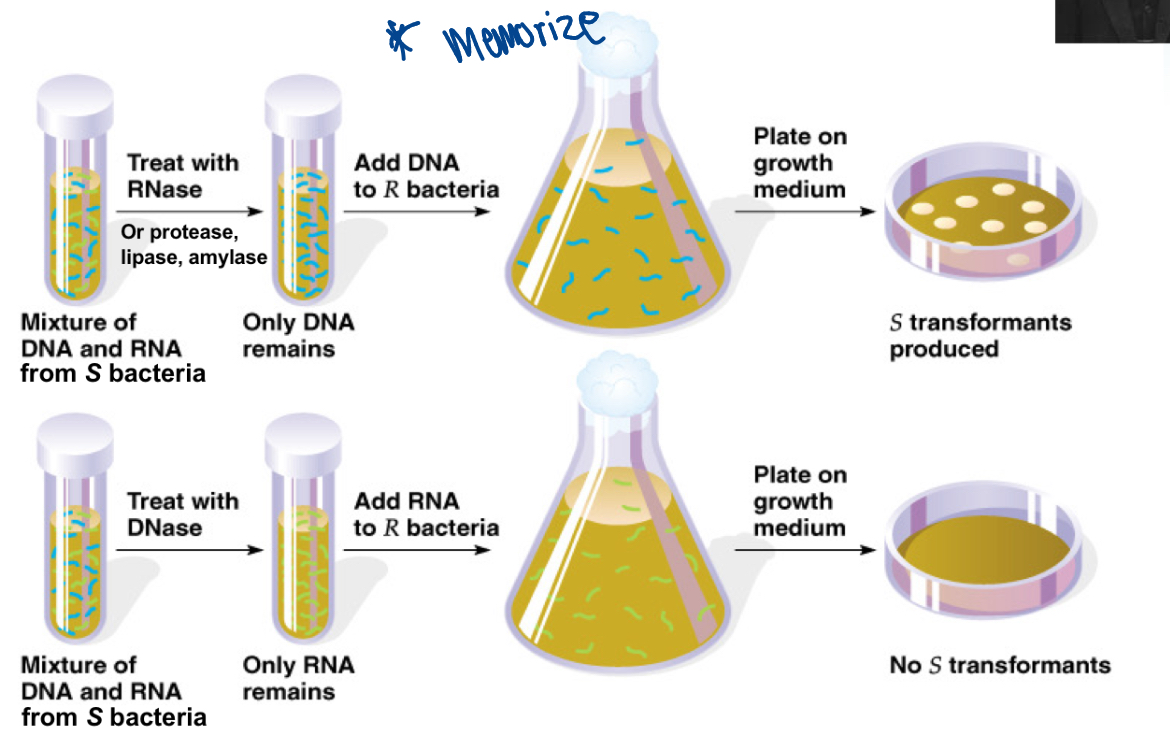genes, brain and behaviour
1/66
There's no tags or description
Looks like no tags are added yet.
Name | Mastery | Learn | Test | Matching | Spaced |
|---|
No study sessions yet.
67 Terms
What are alleles
Two genes that control the same trait
What is homozygous
2 identical alleles (BB, ww)
What is heterozygous
2 different alleles (Bw)
What is phenotype
Observable traits
What is genotype
Traits present in the genes
True or false: if the dominant trait is present in the genotype (Bw), it will be observed in the phenotype (brown seeds)
True
Why do humans have an extended length of juvenile period
It allows time to develop a large brain and learn complexity of human society
What is the bidirectional view
Environmental and biological conditions influence each other
True or false: evolution does dictate behavior
False, it gives us bodily structures and biological potentialities
What is a limitation of evolutionary psychology
It’s deterministic and ignores the role of environment in shaping human behaviour
Functions of the prefrontal cortex
plays the central role in forming goals and objectives
Devising a plan of action required to attain those goals
Selects the cognitive skills needed to implement the plans, coordinates those skills, and applies them in the correct order
Responsible for evaluating our actions as success or failure relative to our intentions
True or false: a greatly enlarged prefrontal cortex (PFP) is a distinctively human and primate feature
True
The PFP accounts for what % of total cortex in humans
29%
Physiological explanations of behaviour
Relates a behaviour to the activity of the brain and other organs
Ontogenetic explanation of behaviour
Describes the development of a structure or behavior
Evolutionary explanation of behaviour
Reconstructs evolutionary history of a behaviour
Functional explanation of behaviour
Describes why a structure or behaviour evolved
What are exaptation or co-option
Describe a shift in the function of a trait during evolution (e.g, feathers for warmth and then flight)
What are spandrels
A phenotypic characteristic that is a byproduct of the evolution of another trait, rather than a direct product of adaptive selection
What does an adaptation represent?
a trade-off btwn different survival and reproductive needs (e.g, having a large body)
What is proximate causation
The immediate psychological, physiological, biochemical and environmental reasons
sensory systems - need to be able to perceive danger
Mechanisms that drive muscles that elicit behaviour - need to be able to contract muscles to run
Cellular activities regulate development - nerve function
What is ultimate causation
The reason why it increased fitness in the evolutionary past
What are social scientists
They accept that our bodies have been sculpted by evolutionary forces e.g., we all possess sweat glands for thermoregulation
What are evolutionary psychologists
They argue that our psychological mechanisms and the resulting behaviour have also been shaped by the same forces
What is natural selection
The principle that, among the range of inherited trait variations, those that lead to increased reproduction and survival will most likely be passed on to succeeding generations
What are mutations
Random errors in gene replication that lead to a change in the sequence of nucleotides in the genome, resulting in changes in specific gene expressions, brain function and behaviour
What is adaptive behaviour
an evolutionary adaptation that enhances survival and reproductive success
Evolves as natural selection fine-tunes an animal to its environment
What is sexual selection
The creation and maintenance of features essential for attracting the opposite sex, and defending ones status
True or false: natural selection and sexual selection work together
True
What is inclusive fitness
Characteristics will be selected for that improves the chances of an individuals genes being passed directly or via relatives
Principle of variation
Individuals within a species show variation on their physical and behavioural traits
Principle of variation
Variation of physical and behavioural traits are inheritable
Principle of adaptation
Individuals are in competition with one another for scarce resources and some inherited variations will have survival advantages
Principle of evolution
Those who are better adapted to the environment will produce more offspring, who will inherit the same advantages (called fitness)
What is a karyotype
It’s the umber and appearance of chromosomes in the nucleus of a eukaryotic cell
What are sources of variability in development
Combining genes of both parents increases genetic variability
chromosomes in zygote are not exact copies
Identical (monozygotic) twins develop from a single zygote that splits into two
Fraternal (dizygotic) twins develop from separate eggs and sperm
Gene mutations can permanently alter segments of DNA
What are gene-linked abnormalities
Single gene disorder
autosomal dominant
Autosomal recessive
X-linked dominant
X-linked recessive
Y-linked
Mitochondrial
What are some examples of gene-linked abnormalities
cystic fibrosis
Diabetes
Huntingtons
Sickle cell
Spina bifida
What are chromosomal abnormalities
Occur when there is an error in cell division following meiosis or mitosis
Caused by an extra, or irregular portion of chromosomal DNA
What are some examples of chromosomal abnormalities
Down syndrome
XYY syndrome
Klinefelter syndrome (XXY)
What are linkage studies
They look for patterns of inheritance of genetic markers in large families
What is a genetic marker
A segment of DNA that varies among individuals
What is heritability
The statistical estimate of the proportion of the total variance in some trait that is attributable to genetic differences among individuals within a group
expressed as a proportion (60/100)
Max value is 1.0
What are some limits to an estimate of heritability
Applies only to a particular group Living in a particular environment
Heritability estimates do not apply to individuals, only to variations within a group
Even highly heritable traits can be modified by the environment
What are the three ways heritability of a behavior can be estimated
examining whether children more closely resemble their adoptive or biological parents
Comparing identical and fraternal twins
Examine identical twins raised in different households
What is passive gene environment (GE)-Interaction
Parents provide rearing environment
What is evocative GE-Interaction
When genotype elicits certain types of physical and social environments ex. A child with naturally difficult personality provokes parental stress and family discord
What is active GE- Interaction
When children seek out compatible and stimulating environments ex. A child who likes chess might join a chess club
What are prevalence and incidence
They’re measures of distributions of a disease in a population
prevalence is a measure of the # of cases if a disease in a certain population for a specific period of time (both old and new cases)
Incidence is a measure of the number of new cases of the disease
What is ore reliable, prevalence or incidence
Incidence is more reliable in determining the risk of a certain disease to a population
What are complex (or multifactorial) disorders
Disorders caused by the effects of multiple mutated genes in combo with lifestyle and environmental factors
It’s difficult to predict a persons risk of inheriting or passing on these diseases
What is missing heritability of complex disorders
The discrepancy btwn epidemiological heritability estimates and the proportion of phenotypic variation explained by DNA sequence differences
Ex. Having the recipe to a pie with basic ingredients but it doesn’t turn out the way predicted because were missing key techniques like whipping technique or what temp it should be baked at
DNAsequence differences
What are some theories to explain unaccounted heritability
part of the heritability being hidden in numerous weakly contributing genetic risk factor patterns of linkage disequilibrium
Heritability estimates being inflated by epistatic gene interactions - i.e genes can mask each others presence or combine to produce an entirely new trait
Factors that influence phenotypic variability during development
passage of epileptic marks(e.g., DNA/histone modification) through the germ line
passage of maternal RNA molecules into the embryo
Potential passage of prion proteins (misfolded, disease causing protein) from parent to offspring
Biochemical state of the games at the time of conception
Transmission of nutrients, bacteria, or antibodies from maternal circulation to that of the offspring
Describe Frederick Griffith’s Transformation Experiment
performed experiment on rats and 2 strains of bacteria that cause pneumonia
Type R (rough) = non-encapsulated, avirulent, relatively harmless
Type S (smooth) = encapsulated, virulent, severe pneumonia
When injecting mice with Type R, it survived and no bacteria was recovered
When injecting mice with encapsulated Type S, the mice died and virulent bacteria was recovered
When heat killed encapsulated Type S was injected, the mice lived and no bacteria was recovered
When mice was injected with Type R and heat killed Type S, mice died and bac tria was recovered
This means that the capsule remained intact and transferred onto the R bacteria
Conclusion: DNA (not RNA) is the transforming agent

Oswald T. Avery’s Transformation Experiment
determined that the DNA from type S bacteria was the genetic material responsible for Griffiths results (not RNA)

Describe the Hershey-Chase Bacteriophage Experiment
DNA (not protein) is the genetic material
Labeled the DNA of bacteriophage with p32 and their protein coats with with s35
Only the labeled p32 entered the host bacteria during infection while the s35 remained on the outside
This confirmed that the DNA was injected into the bacterial cells to direct the production of new phages
Describe the blender experiment
The virulent bacteriophage is composed of DNA and a protein shell
What are the three components of DNA and RNA
Pentose (5-carbon) sugar
DNA = deoxyribose
RNA = ribose
Nitrogenous base
Purines
Adenine
Guanine
Pyrimidines
Cytosine
Thymine (DNA)
Uracil (RNA)
Phosphate group attached to the 5’ carbon
What is a phosphodiester bond
covalent bond btwn the phosphate group ( attached to the 5’ carbon) of one nucleotide and the 3’ carbon of the sugar of another nucleotide
This bond is very strong, and for this reason DNA is very stable
True or false: nucleotides are linked by phosphodiester bonds to form polynucleotides
True
What are the 6 main features of the double helix model of DNA
Two polynucleotide chains wound in a clockwise double helix
Nucleotide chains are anti parallel
Sugar-phosphate backbones are the outside of the double helix, and the bases are oriented towards the central axis
Complementary base pairs from opposite strands are bound together by weak hydrogen bonds
A pairs with T (2 H-bonds) and G pairs with C (3 H-bonds)
One complete turn of the helix requires 10 bases
Sugar-phosphate backbones are not equally spaced, resulting in major and minor grooves
The larger grooves bind transcription factors
They can also be methylated
DNA replication (in the cell nucleus)
to make a copy of itself, dNA unwinds and separated using helicase into two strands
Proper base pairs are assembled on the template by DNA polymerase 5’ → 3’ direction
Nucleotides are connected together by DNA ligase to make a new strand that is identical to the old strand
RNA characteristics
single stranded and shorter than DNA
Less stable than DNA
Ribose is the 5-carbon sugar (lots of variation with them)
Uracil replaces thymine
Key concepts of regulation of gene expression in cells
DNA is transcribed into an mRNA molecule, which is then translated during protein synthesis
Translation requires transfer RNAs and ribosomes
The genetic code is no overlapping triplet code (e.g. codons)
Special sequences signal the initiation and termination of both transcription and translation
True or false: DNA is the same in all somatic cells of an organism
True
What are some key differences btwn eukaryotes and prokaryotes
three RNA polymerases
Monocistronic gene structure (mRNAs encode single gene product)
RNA processing (‘capped at 5’ end, ‘polyadenylated’ at 3’ end, ‘spliced’)
split gene structure (genes contains introns)